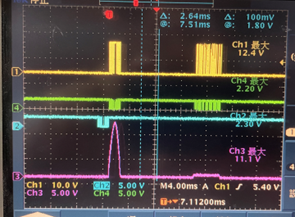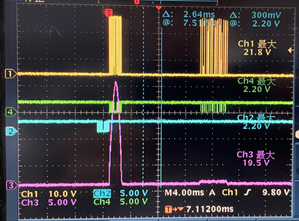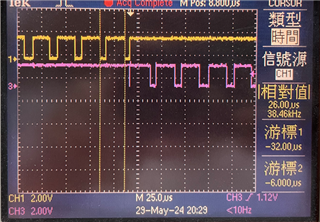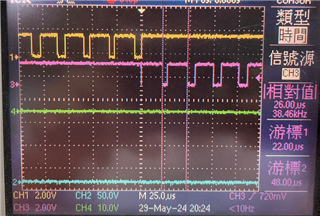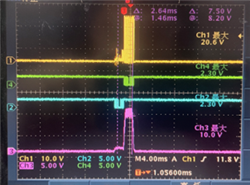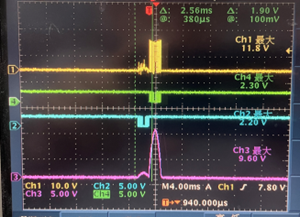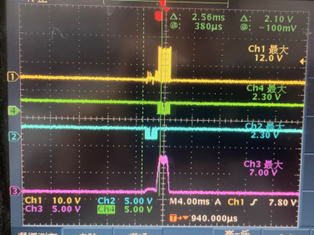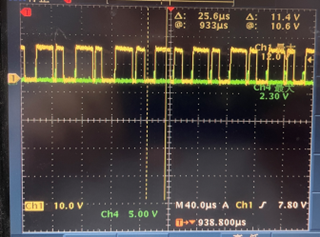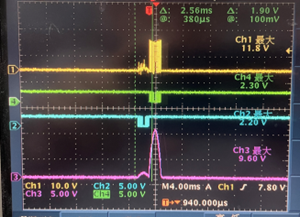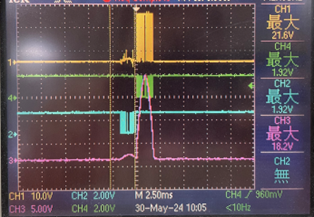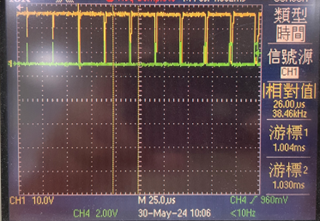Tool/software:
Hello TI team
There is a Haptic application with loading(Coil 6.8 ohms),Input Voltage is 21.4V, Vref is 5V, and ISEN connected to GND.
The experiment found that when the input voltage is 21.4V, the Voltage duty cycle of the OUT PIN and IN PIN (PWM) is different from that when the input voltage is 12V. In addition to other experiments, when there is no loading and the input voltage is 21.4V or 12V, the Voltage duty cycle of the OUT PIN and IN PIN (PWM) are the same, as shown in the figure.
I want to understand why the input voltage is 21.4V, Vref is 5V, ISEN connected to GND(it seems to meet the specifications of Drv8231),but the Voltage duty cycle is different? Is there any part that has not been noticed?
Will there be any problem with the above conditions (The loading(coil 6.8 ohms), Input Voltage is 21.4V, Vref is 5V, and ISEN connected to GND) with Drv8231? Thank you!!






